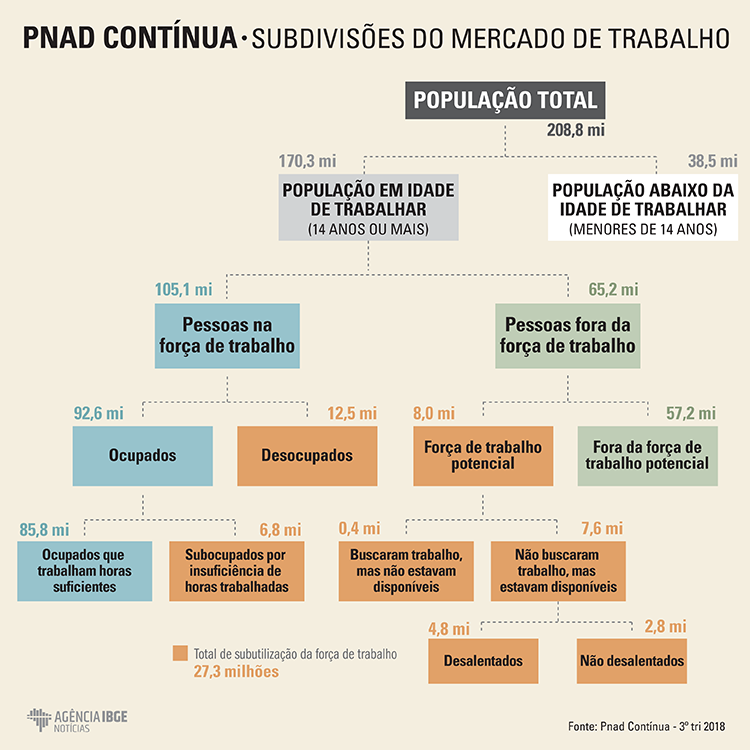
Initiated in Q1 2012, the Continuous National Household Sample Survey (Continuous PNAD) is acknowledged by the International Labor Organization (ILO) as a job market monitoring instruments mostly aligned with the recommendations of that agency.
The survey gained relevance since it started to release information about the underutilization of workforce, in accordance with guidelines from Resolution I (concerning labor statistics, employment and underutilization of workforce) in the 19th International Conference of Labor Statisticians (CIET), conducted in 2013.
“Before Brazil adopted the Resolution I from the ILO there was only one official mesurement of workforce underutilizationd, unemployment. We were one of the first countries to adopt the new workforce underutilization indicators proposed by ILO”, says Cimar Azered, IBGE coordinator of labor and income.
Due to this pioneer action, ILO invited the IBGE to make a presentation on its experiences regarding the adoption of the new labor indicators in the job market at the 20th International Conference of Labor Statisticians, held in Geneva (Switzerland) last month.
Today the country has a more complete panorama of the labor market
Nowadays, besides the unemployed, Continuous PNAD investigates persons underemployed due to insufficient working hours (those who work less than 40 hours a week, but who are able and would like to work more hours).
Another aspect investigated are the populations which have a potential to join the workforce, but that are out of it for some reason. The first one of them is the discouraged population, formed by persons who have given up or that have not even started looking for a job. “In the middel of an economic crisis, these persons, who think they will not be able to find a job, give up the labor market. Their workforce ends up being underutilized”, Cimar explains.
The other population group that is out of the workforce is formed by persons who look for a job but cannot hold the position. According to Cimar, these persons have to take care of their children, of other relatives, or even to dedicate their time to studying.
Who are the unemployed?
According to Cimar, unemployed persons, in the scope of the survey, atrre those who were not working in the week of reference of the survey, who took some action to find a job in a period 30 days and who were available to hold the position. The grou of persons who took action to find a job includes thouse who sent their CVs to companies or applied for positions with the help of an employment agency.
Being a beneficiary of social programs, like Bolsa Família or employment insurance does not have a direct correlation with empoyment or unemployment. “We should point out that being a social program beneficiary is not a determining factor that classifies a person as a member or non-memer of the workforce. Those beneficiaries can hold different statuses regarding the lebor market, according to the concepts of the survey”, Cimar highlights.
Those persons can be part of the workforce (as employed or unemployed) or be out of it (not classified as either employed or unemployed). In fact, in the latter, those beneficiaries can be classifed as discouraged, or simply as a population out of the workforce, as seem in the image below:


